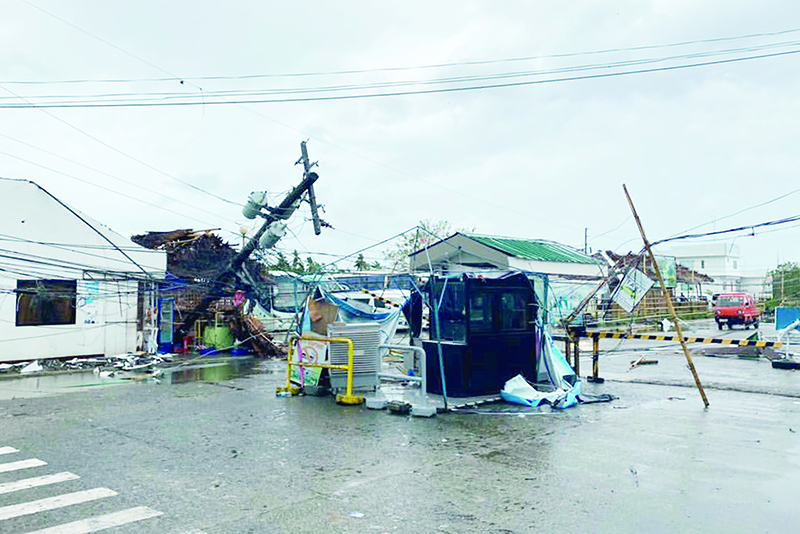
MANILA: The number of people killed by a powerful storm that pummeled the central Philippines over Christmas has risen to 50, authorities said yesterday, making it the nation's deadliest storm of 2019. Typhoon Phanfone's destructive winds and heavy rains brought down flimsy homes and destroyed commercial buildings mainly in the central island of Visayas, affecting more than two million people.
At least 80,000 remain in emergency shelters and might have to stay until the New Year, given the scale of destruction. "We're sad that some of our countrymen are still in evacuation centers, but we assure them they will continue to receive support until they get back on their feet," national disaster agency spokesman Mark Timbal told AFP. Five people are still missing after the storm, which also left 143 injured.
The death toll-up from 41 on Sunday-included three sailors who died after their vessel capsized, a policeman electrocuted by a toppled post, and a man struck by a falling tree. Typhoon Phanfone, locally called Ursula, was the 21st cyclone this year to hit the storm-prone Philippines. Many of the storms wipe out harvests, homes and infrastructure, keeping millions of people in perpetual poverty.
It was the seventh typhoon to strike the Philippines this year and came as millions of people in the predominantly Catholic country were heading home to celebrate Christmas with families. There was widespread travel disruption with 115 flights cancelled and thousands of people stranded by the suspension of ferries due to storm surges. It was unclear how the deaths occurred, but officials said some were hit by trees, electrocuted or drowned.
"People did not expect that the storm would be that devastating," said disaster agency spokesman Mark Timbal. Though less powerful than other typhoons this year, Phanphone made landfall in some of the country's poorest and least-developed islands. Among them was the island of Samar, which bore the brunt of Typhoon Haiyan in 2013, the Philippines' most powerful and deadliest storm on record. It killed more than 6,300 people.
Residents there were clearing debris, with wooden pillars and sheets of corrugated iron roof that were once homes, scattered across the ground. Men pulled tried to recover fishing boats with tangled or damaged outriggers. Samar resident Virgilo Catayas, whose sibling was among those killed by Haiyan, said he lost another to hypertension when Phanphone hit.
"We can't really do much if that's what happened, we'll have to accept it," he told broadcaster ABS-CBN. "The important thing is to stay strong," he said, sitting next to a casket. Television showed minor damage to the airport at Kalibo, an alternative gateway to the holiday island of Boracay, while the disaster agency said 55 schools had suffered some damage. The agriculture department estimated initial damages of 569 million pesos ($11.17 million) mostly to fish farms. - Agencies











